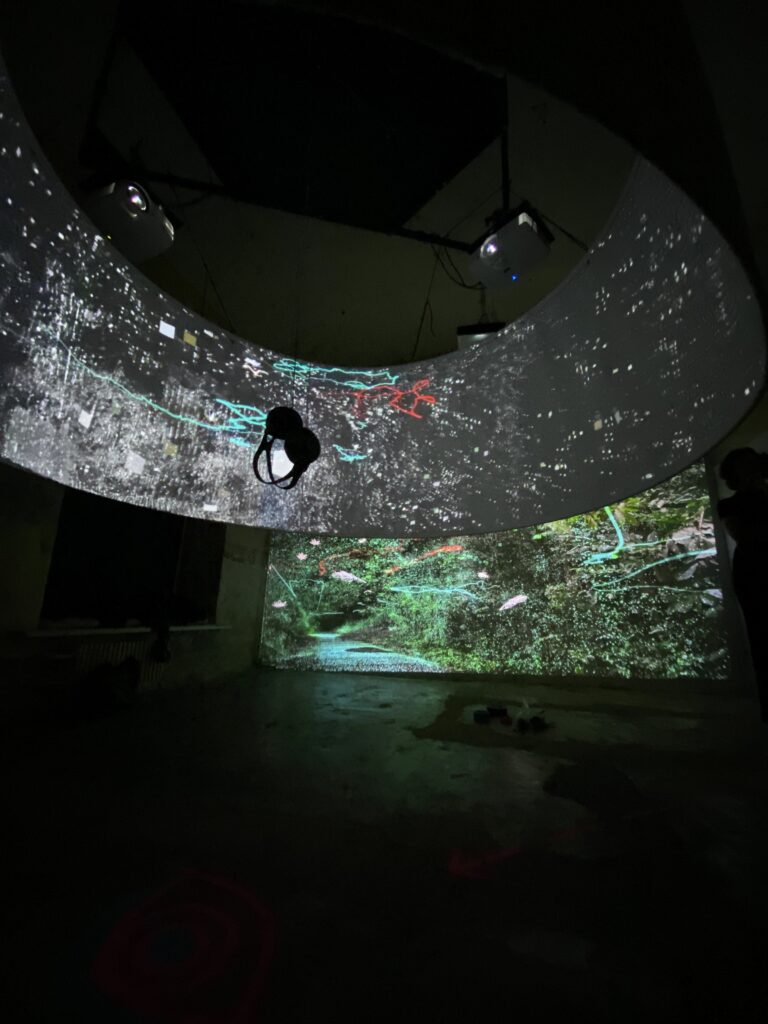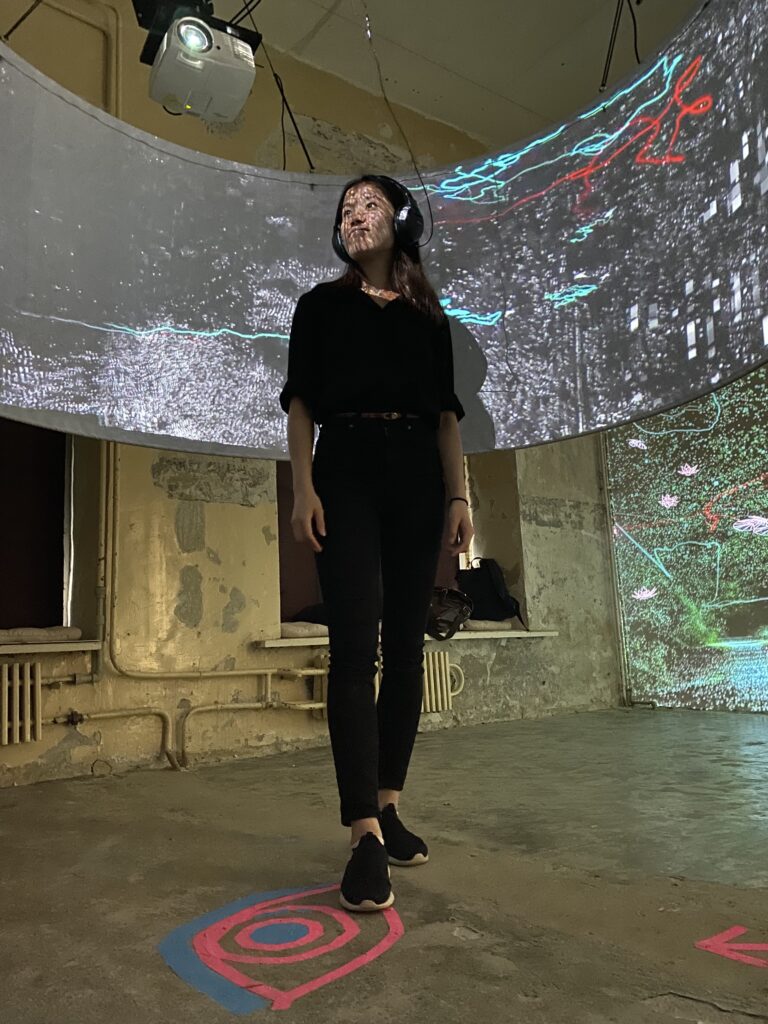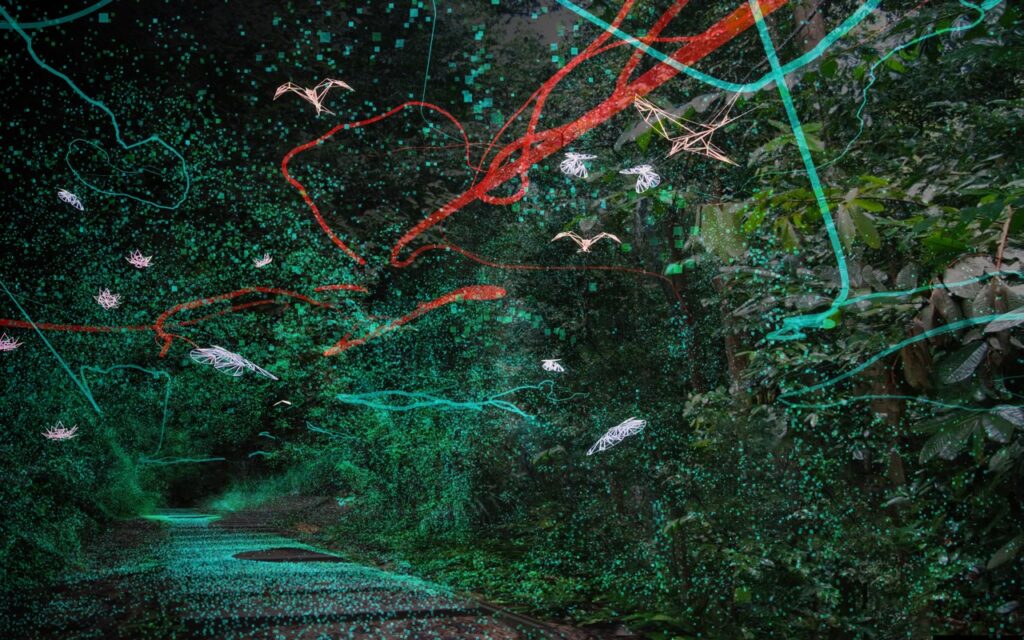
Projektin tyyppi
Yhdyskuntasuunnittelu
Vuosi
2022
Tutkinnon taso
M.Arch
Tiimi: Kwan Yui Ip, Nanna Kemppinen ja Werneri Vähä-Impola
Urban green enables numerous living conditions for people and other species. This spatial experience gives a peek into the living environment of the many residents and users of the Rail Corridor as well as the behaviours of the living building components. The number of butterflies signals of an environment’s good ecological condition and a fine level of diversity. This in mind, at the centre of the design shines the Nymphalidae family of butterflies. (Suntinger 2019.) The result of the design is a series of spatial experiences that illustrate the diversity of the Nymphalidae family. The spatial experience is formed by simulating the environmental actors, such as inter- species interactions without going too thoroughly into the complexity of an ecosystem. Rather, Nymphalidae highlights how isolated significant factors have an affect on the ecosystem and the development of biodiversity. The spatial experience presents the occurrence data for the selected species from the last 20 years and guides sight towards future scenarios – What is the future of biodiversity and of our habitats in the decades to come?
Context to Rail Corridor
Singapore is one of the richest regions in the world in terms of biodiversity (Corlett et al. 2011). The Rail Corridor, which connects green areas along the entire length of the city, appears to be a significant urban green space on the scale of Singapore. However, deforestation threatens the survival opportunities of more and more species. For example, the clearing of the forest in Kranji Woodland in the northern part of Singapore in 2021 has reduced the survival opportunities of organisms in the area (The Strait Times 2021). Nurturing biodiversity is important, as it maintains the vitality and stability of ecosystems and as such has an impact on our living conditions (Uimonen 2020).
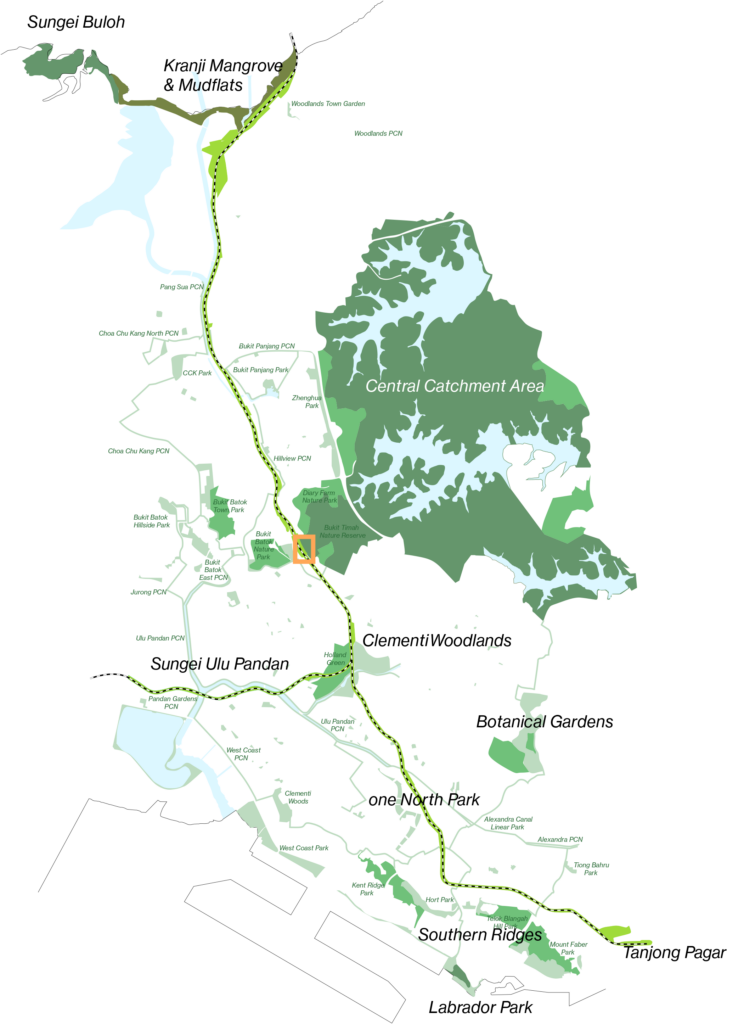
Site area
The research area is located at the central parts of the Rail Corridor, west of the Bukit Timah Nature Reserve. At this point, the surrounding zone around the railroad consists of residential areas, roads, and a nature reserve where the species biodiversity of the urban area is clearly observable. The Rewilding Project and the nature resto- ration measures implemented in the target area were key sources of inspiration to selecting the area. The biodiversity of the research site has been observed using different methods including 3D laser scanning, photography, and sound recording. The coloured laser scan of the area covers a 600-metre stretch bordering the western part of the Nature Reserve and was used as the terrain in the project. The photos taken at the site serve as the sources of the project’s colour scheme. Audio recordings are used to enhance the experience by adding multi-layered sound sources to the VR world. The purpose of the collected data is to provide a multi-sen- sory spatial experience in the VR world.
Species Data
The work utilizes occurrence data of species, gathered from an international open data organisation called GBIF Global Biodiversity Information Facility. The data includes species occurrences from the beginning of the 21st century to the present day. The species data is based on the presence of the organisms in Singapore and the Rail Corridor. Data has been collected from three classes of organisms occurring on the Rail Corridor: insects, birds, and plants with each at a precision of family taxonomic rank. In the spatial experience, the emphasis is on butter- fly species belonging to the Nymphalidae family as insect data, Bird species belonging to the Cuculidae family as bird data, and plant species belonging to the Myrtaceae family as plant data. The experience evaluates the evolution of the occurrence of the species in the future by using Excel’s Linear Regression analysis tool. The final area of the experience creates a speculative scenario of the development of the diversity in the future.
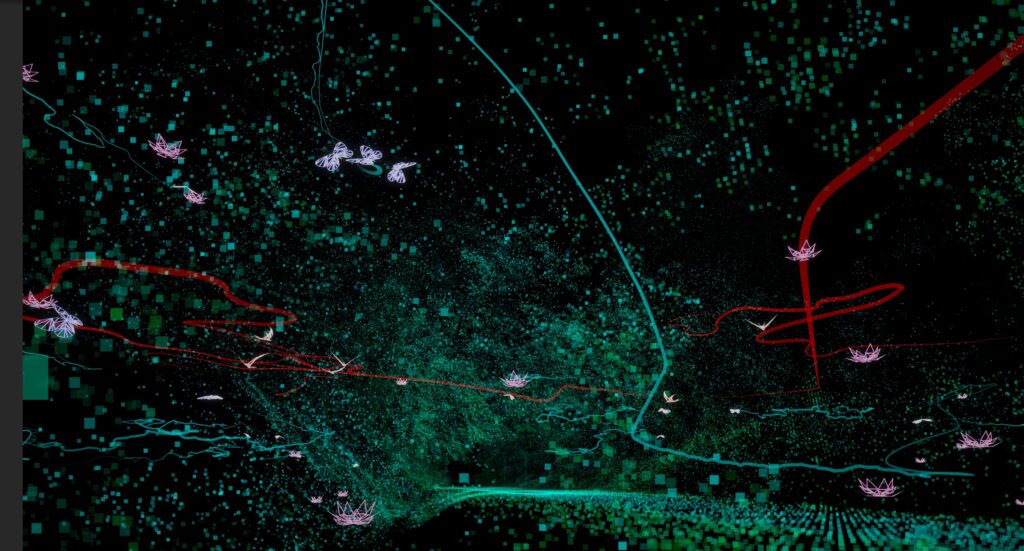
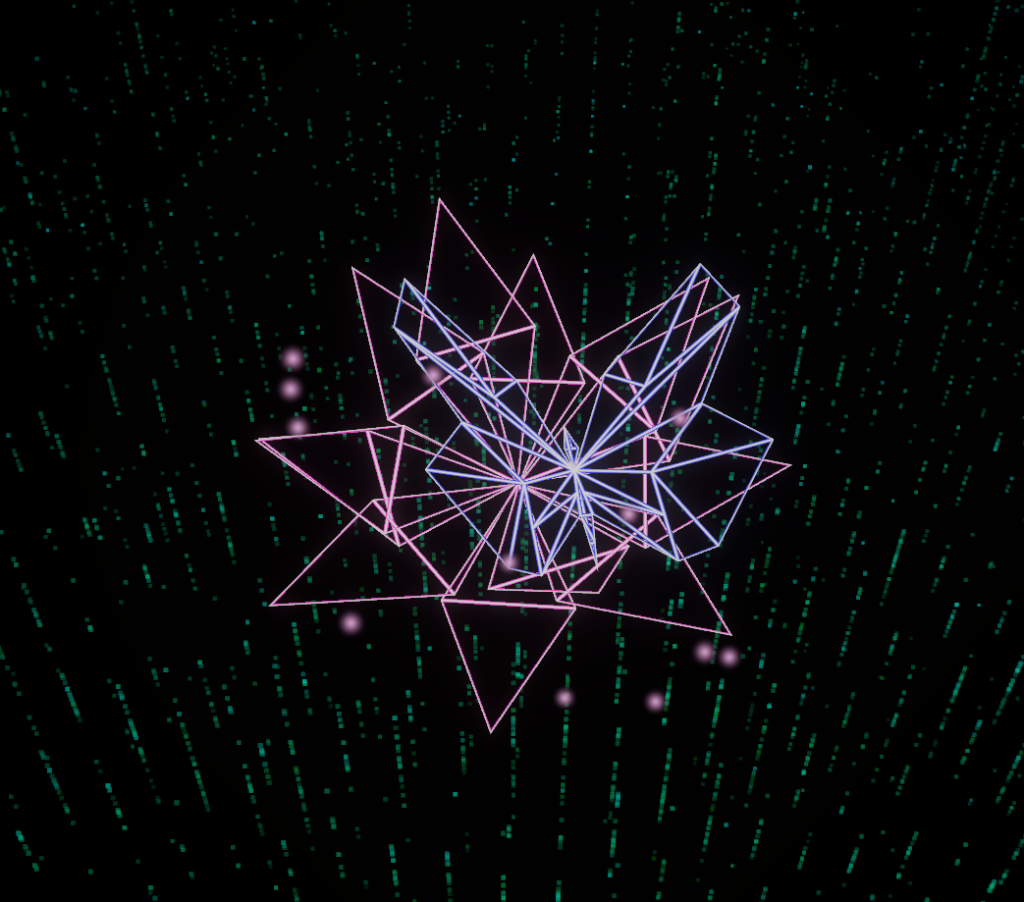
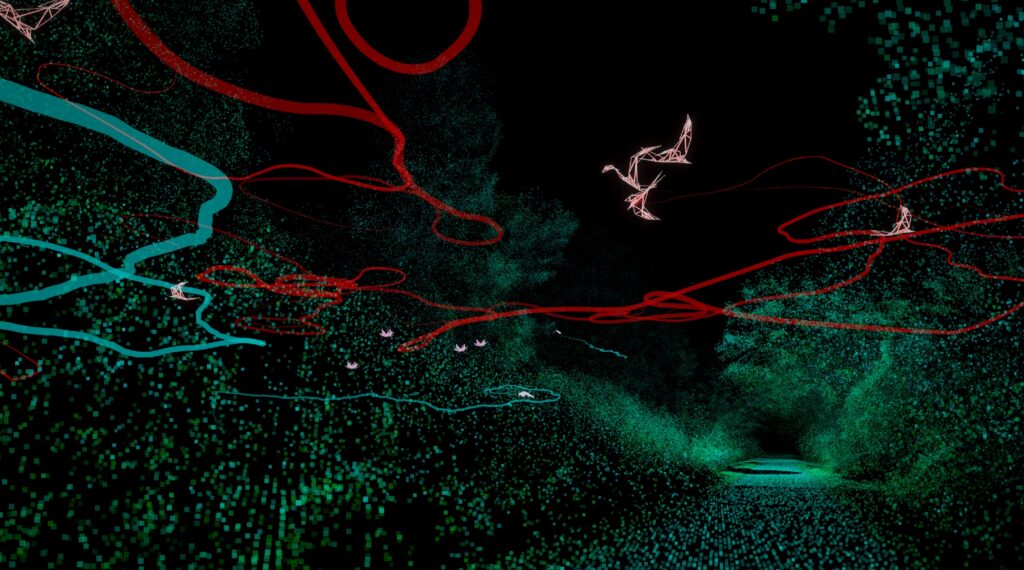
Process and Implementation
The original goal of the project was to enhance the bio- diversity of the Rail Corridor by letting the user modify the environment but after the Singapore excursion the goal changed. Now, the project focuses on simulating the current condition of the biodiversity and does not present itself as a solution on stopping the depletion of biodiversity. Based on references, the project simulates a projection of the ecosystem of the research area in a simplified manner, with a focus on a food chain involving the Nymphalidae family. In the simulation the insectivores eat insects that are attracted by the nectar found in blossom- ing trees. The plant life uses the butterflies as pollinators and the decomposing matter of animals as nutrition. In addition, each family is unique in its behavioural patterns such as movement, hunting, reproduction, pollination, and lifetime.
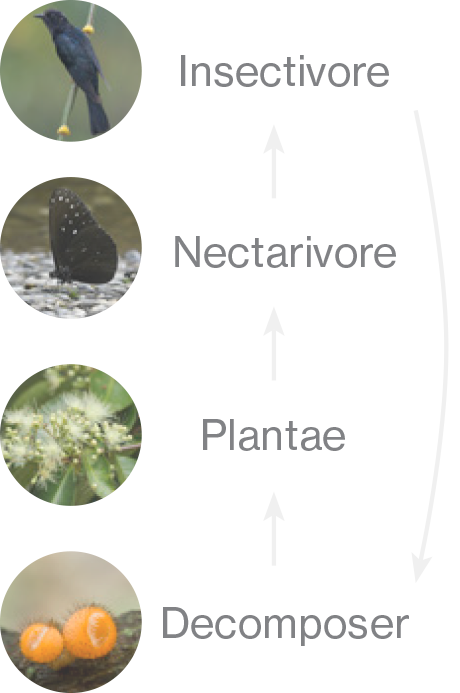
When creating the simulated experience, a key source of inspiration for the species interactions and behavioural systems was the Cellular Automata model (Torrens & Torrens 2004). The simplified set of rules implemented for the creatures creates a complex behaviour system that can be manipulated using parameters. Multiple art installations such as Hans Op de Beeck’s The Quiet Parade (2022) and teamLab’s Flutter of Butterflied Beyond Borders (2015), worked as inspiration for the visualisation of the ecosystem.
